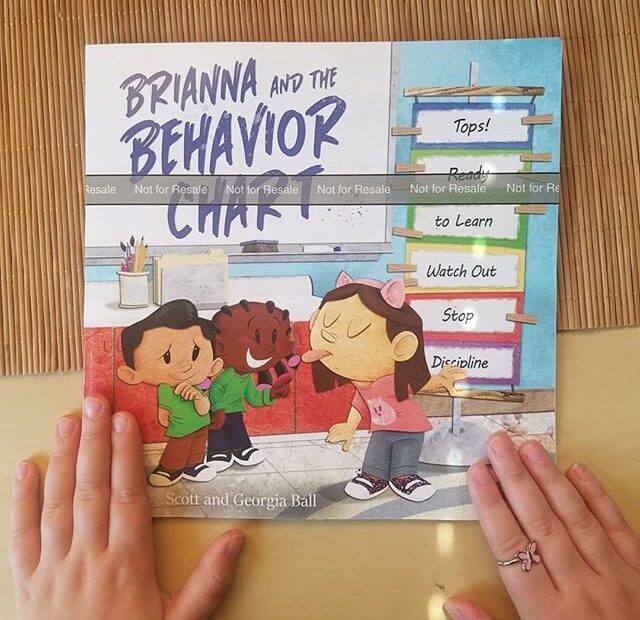It’s the end of the first week of our first picture book release, Brianna and the Behavior Chart, and I’ve learned a lot very quickly. Jumping into indie publishing has been a little like hopping into a lake in the Pacific Northwest; who knows how deep you’ll go or what you might run into, but you can be sure it will be a bit of a shock.
One of the things I knew going in was that books for adults make more money online than books for kids. My history and my expertise are in children’s books. I’m also married to an illustrator. We made webcomics for years but I’m a little weary of laboring over free entertainment, so I was determined to do as much as I could to treat our new production line like a business.
File Size
Authors are attracted to Amazon for a lot of reasons, but high on the list is the 70% royalty rate. The conventional wisdom is that children’s books are still more profitable when sold as traditional hardbacks because picture-heavy books have too low of a margin. I did my research and discovered that wisdom comes from Amazon’s download fees, at least 15 cents removed from your cut with each additional MB after 2MB.
Authors in my various support groups reported file sizes anywhere from 8MB to 16MB or higher, forcing them to choose the 35% royalty option instead of the 70% so they could avoid worrying about download fees. I’m a front-end developer who has been compressing and optimizing images since 1999; allowing Amazon to decide how to compress my files was unacceptable to me.
With research and experimentation, I developed a process that took my 8MB file down to 2.8MB, therefore avoiding any additional download fees. Take that, conventional wisdom!
Print Runs
If you’re just considering your profits by margin per unit, ordering a print run of your picture book hardback overseas is the only option. Average pricing tends to run around over $2 a book, but let’s pretend it’s $2 and you plan to sell your book at the bargain price of $20. You order the average print run: 5,000 copies.
You’ve now spent $10,000 upfront on a hope and prayer that the book will have buyers. You need to sell 555 copies to make your initial investment back, and that doesn’t include marketing or any other costs you might have incurred during production. You will make $18 off any single unit you sell, but they may not sell, and it may take a long time to feel like you made the right decision.
Scott and I printed a small-press run of our first Scooter and Ferret collection in 2006. We got about 300 copies printed; it’s now 2018 and we still have a few copies left. We didn’t have the kind of resources available to the modern indie author selling hardcovers or paperbacks on Amazon, but we didn’t make our money back, and maybe you won’t either. Print runs are a risk, not even counting the work involved in shipping and keeping online markets stocked with your book.
We opted for print-on-demand and I’m glad we did. In full-color on glossy paper, I couldn’t be happier with the quality of the book. I did my research and put in the effort to bring the book to full-bleed without a pile of errors. I used InDesign, Photoshop, and KDP to put it together and took advantage of Amazon’s templates and spec sheets. The paperback makes the same profit margin as the e-book with FAR less risk.
I have seen authors forego making an e-book on the idea that 1) kids need less screen time and 2) parents don’t buy e-books for their kids. Kids may need less screen time, but they’re getting plenty of it anyway. If I hadn’t made a Kindle version I would have lost out on a lot of sales and borrows, as well as a convenient way to encourage readers to review the book.
Advertising
I set a budget of $100 to do some minor promotion for my first indie book. Most book promotion sites didn’t do anything for me, but they also weren’t a heavy expenditure, and the first time out is all about experimentation. Freebooksy was an effective tool for me during my promo when I offered the Kindle book for free, but Instafreebie and other newsletters were not. I had better luck with two minor Facebook post boosts targeted at parents who were likely to enjoy the book.
My AMS (Amazon Marketing Services) ads are running at a profitable pace, but there are some reasons for that. I took a video course on setting up AMS campaigns and identifying potential keywords. Since I plan on publishing more books, I purchased KDP Rocket, and my new program did point out some winning keywords I didn’t come up with on my own. I set my average daily spend to an amount low enough to come to a reasonable final tally at the end of 30 days and kept my individual keyword bids low.
I download the data every night and I compare the numbers because AMS is an ongoing strategy. The best way to make more money from writing books, of course, is to write more books.
Down the line, I hope to use what I’ve learned to consult for other authors who want to avoid some of the financial pitfalls associated with releasing a children’s book. For now, I’m happy with my progress and excited to see my author rank at the highest it’s ever been. On to the next book!
